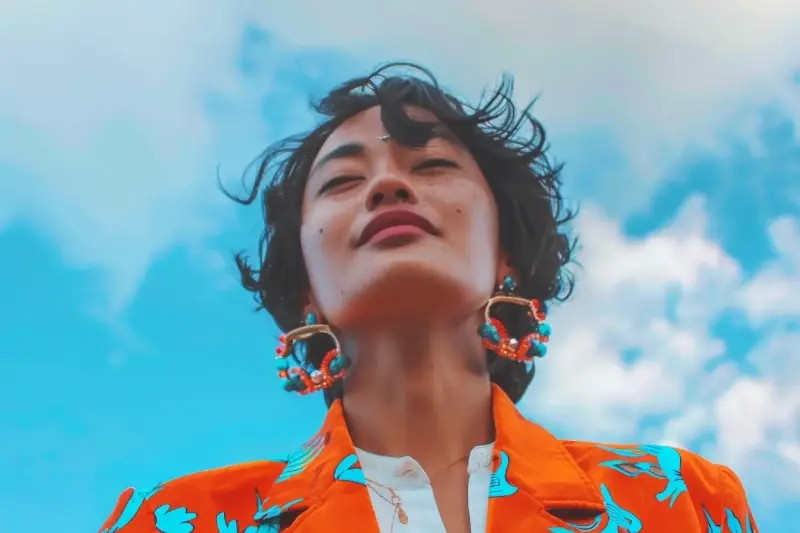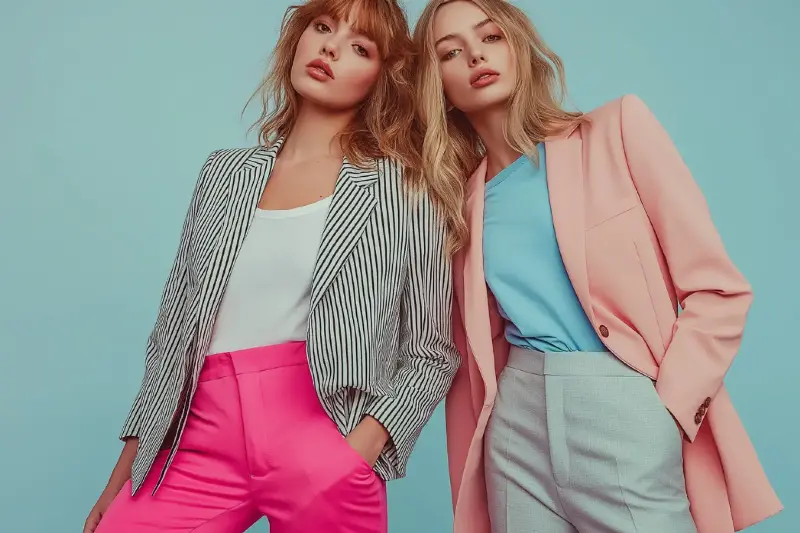
In a city where fashion is as fast and dynamic as its bustling streets, Seoul has always served as a pulse point for global style inspiration. As the curtains rise on 2025, the landscape of Korean fashion is taking on a softer mood, marking a fascinating evolution from bold, energetic statements to nuanced elegance. The streets and runways alike are now awash with soft colour palettes and inviting textures, reflecting subtlety, comfort, and emotional connectivity. Let’s dive into how these trends are setting the tone for Seoul’s latest style revolution.
Seoul’s Subtle Colour Revolution
What stands out immediately for the discerning eye is the transformation in colour usage. While Seoul has long been celebrated for its fearless use of jewel tones and neon brights, the forecast for 2025 sees a gentle shift. Designers and influencers are embracing pastel hues with a sophistication that feels both refreshing and refined.
Think powder blues, muted sage, blush pinks, and creamy beiges—each carefully selected to radiate calmness and understated sophistication. According to Choi Min-Kyung, a young designer at the forefront of Seoul’s emerging talents, “A neutral or soft colour draws people in without overwhelming them. It sets the perfect stage for personal expression.” This approach has resonated deeply among both male and female consumers, eager for versatile wardrobes that blend seamlessly from work to leisure.
Notably, these soft shades are not just limited to women’s collections. Men’s fashion in Seoul is equally embracing these calming tones, with oversized suits in dove grey and pale olive, or relaxed-fit trousers paired with ice-blue shirts becoming staples. This marks a notable departure from conventional dark palettes, highlighting an inclusive and gender-fluid shift in Seoul’s fashion narrative.
The Rise Of Texture Play
Complementing the trend of gentle colours is a renewed focus on texture—a tactile feast for the senses. Seoul’s designers are layering textiles to create depth, movement, and warmth. We are seeing sheer organza blended with chunky knitwear, lightweight silks paired with vegan leathers, and even crinkled cottons sitting beside soft, quilted patterns.
What’s driving this love for mixing materials? According to fashion curator Kang Da-Eun, texture play allows creators to “tell a story with their hands, not just with their eyes.” These tactile contrasts evoke emotion—comfort, nostalgia, and even a sense of playful experimentation.
Luxury brands and indie labels alike are experimenting with unconventional pairings. Take, for example, the now-iconic cropped mohair sweaters thrown over silk maxi dresses seen at last season’s Seoul Fashion Week. Meanwhile, streetwear aficionados are taking cues from the runway, styling fuzzy bucket hats with sleek windbreakers, or chunky corduroy pants with breezy linen shirts.
Cultural Roots And Modern Sensibility
Part of the soft palette and textural focus is rooted in Korean heritage itself. Traditional Korean hanbok, with its clean lines, layered textiles, and serene colour schemes, serves as a subtle influence here. The hanbok’s muted earth tones and fluid silhouettes have inspired modern interpretations that play elegantly into today’s trends.
Contemporary designers are also drawing inspiration from the concept of ‘jeong’—a uniquely Korean sense of warmth and connection. This cultural ethos translates into fabrics that feel inviting and colours that soothe, amplifying the emotional aspect of clothing.
In 2025, collaborations between established hanbok artisans and new-generation designers are flourishing. Capsule collections featuring natural dyes and eco-friendly materials not only pay homage to the past but also align with the global push for sustainability, making Seoul’s current fashion wave as thoughtful as it is beautiful.

The Gender-Inclusive Palette
One of the most exciting aspects of Seoul’s 2025 fashion is the way it crosses traditional gender lines. The use of soft tones and fluid textures is not confined to one demographic. Unisex tailoring, oversized fits, and accessories crafted from plush or tactile fabrics blur boundaries and encourage freedom of personal style.
Popular street retailers in hip neighborhoods such as Hongdae and Garosugil now feature gender-neutral pastel coats, creamy canvas sneakers, and lightly padded bags, which appeal to all audiences. Even K-pop stars, icons of contemporary Korean culture, are leading the charge, donning pastel-hued suits and billowy, softly textured layers in both music videos and red carpet appearances.
The result? Fashion in Seoul feels more democratic than ever. It's not just about making a statement but creating an environment where everyone feels welcome to experiment with colour and fabric.
Fashion And The Mood Of The Moment
Seoul’s shift toward softer colours and sumptuous textures isn’t occurring in a vacuum. The trend mirrors a wider societal desire for balance and calm in a fast-paced world. As consumers grapple with urban stress and information overload, there is a clear move toward fashion that comforts, calms, and uplifts.
This mood is reflected in Seoul’s café culture too, where interiors are often awash with neutral tones and plush furnishings, creating harmony between personal style and environment. Fashion houses are even launching wellness-driven campaigns, emphasizing how what we wear can be a form of self-care.
In the end, the evolution seen in 2025 is more than a fleeting trend. It’s a reflection of Seoul itself—a city that skillfully balances innovation with tradition, individuality with inclusivity, and boldness with quiet confidence. As soft colour palettes and artful textures continue to shape Korean fashion, the world is taking note—proving once again that sometimes, the most powerful statements are spoken in a whisper.
